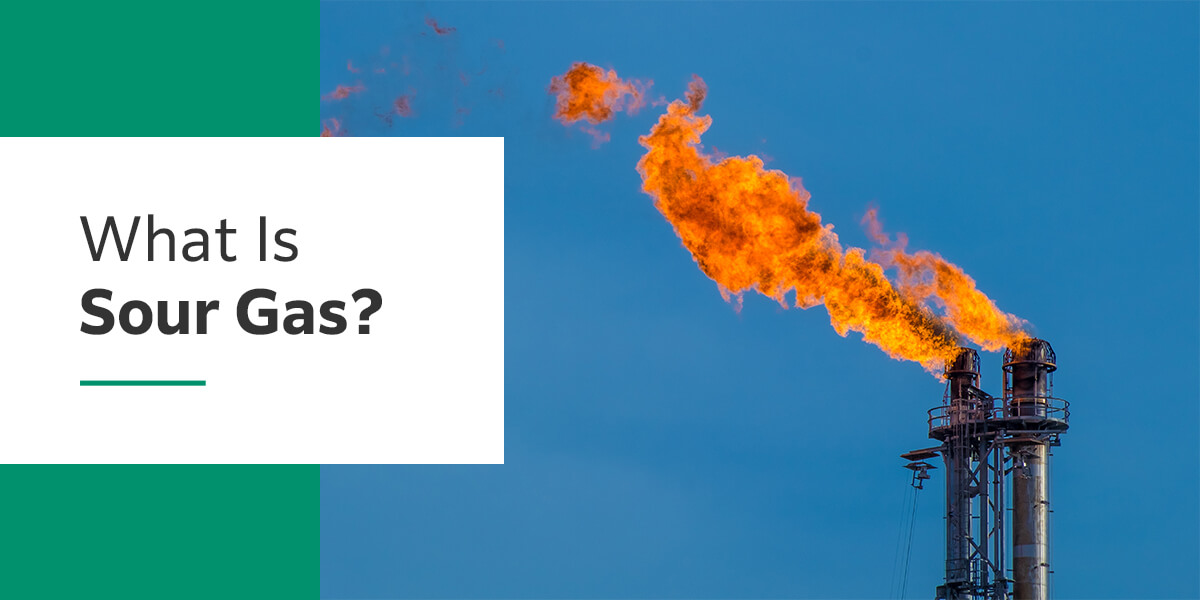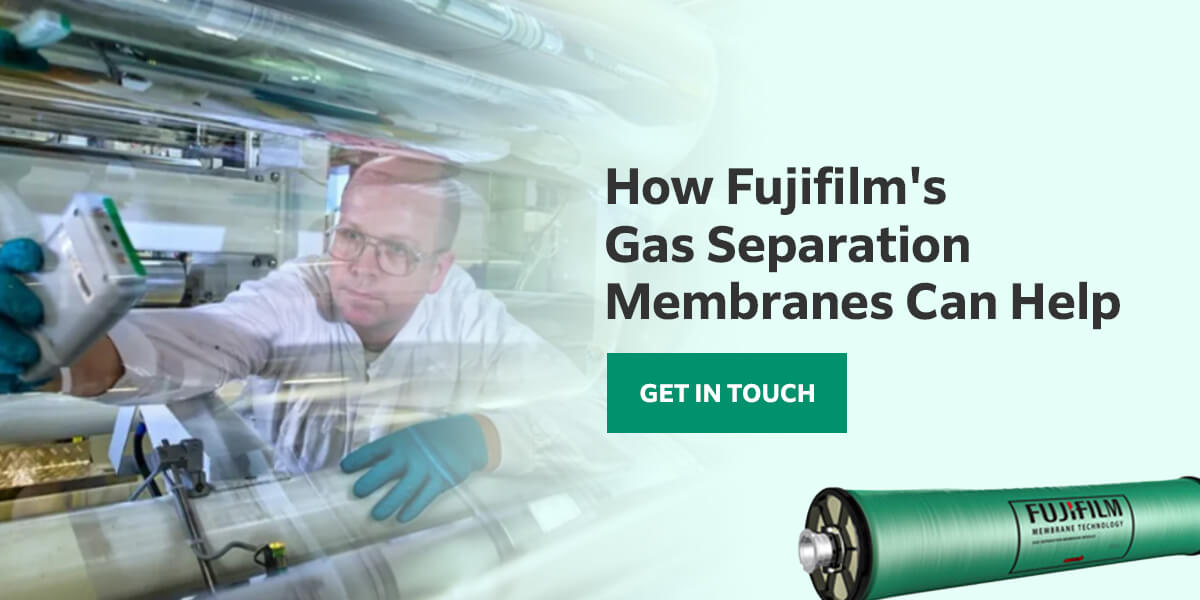
Jump to:
- Sour Gas Composition
- What Are the Negative Side Effects of the Contaminants in Sour Gas?
- How Is Sour Gas Refined?
We use natural gas for dozens of different applications in our world. From heating homes and providing electricity to making fuel for transportation, natural gas is one of the most important energy sources we have. Sour gas falls under the category of natural gas but often has dangerous properties.
Certain contaminants in sour gas can cause damage to equipment at energy facilities, gas pipelines and even toxic exposure to humans. Sour gas must also be treated safely and carefully to prevent leakage and the risk of unnecessary carbon dioxide emissions into the environment. In this article, we’ll discuss sour gas characteristics, contaminants and how to remove sour gas to make it suitable for end-users.
Sour Gas Composition
Sour gas is a form of natural gas with significant acidic properties on its own or in the presence of water. A common component in gas and oil drilling and production that makes up sour gas is hydrogen sulfide (H2S). While many assume sour gas and acid gas are interchangeable terms, they vary slightly in composition.
High concentrations of hydrogen sulfide specifically create sour gas, while acid gas is composed of elevated amounts of both carbon dioxide (CO2) and hydrogen sulfide (H2S). When hydrogen sulfide in sour gas hits the air, it smells like rotten eggs, garlic or cabbage. This gas is also colorless, extremely flammable and combustible near ignition sources and oxygen.
Sour gas, or acid gas, must be treated in a natural gas processing plant to eliminate chemical contaminants before it can meet standards for quality, safety and transportation through pipelines.
These foul-smelling compounds need to be stripped from the natural gas down to acceptable levels, and mercaptans without harmful sour gas contaminants will be added in their place so natural gas is detectable in the event of a leak. Nitrogen, sulfur and mercury are other known contaminants in natural gas. Natural gas with only minimal amounts of hydrogen sulfide and carbon dioxide is known as sweet gas.
What Are the Negative Side Effects of the Contaminants in Sour Gas?
In the presence of moisture, hydrogen sulfide and carbon dioxide can lead to many damaging side effects. This combination can be toxic for humans to breathe and even cause death. Hydrogen sulfide on its own can cause severe injury and death, even at low concentrations.
At higher concentrations, humans can no longer smell the odor, making it a significant risk factor for detecting leakage because it can impair breathing. Exposure to hydrogen sulfide can have varying effects on humans, depending on the type of work being done, the concentration and the duration. Some other effects of hydrogen sulfide contamination include:
- Apnea
- Convulsions
- Dizziness
- Irritation to the eyes and respiratory system
- Headache
- Weakness
- Tremors
- Delirium
- Upset stomach
- Insomnia
- Irritability
The combination of carbon dioxide and hydrogen sulfide can also cause corrosion in piping and sulfide stress cracking, leading to leakage and combustion. The corrosion of gas pipelines can create poisonous or life-threatening effects on solid adsorption beds used in the contamination removal process.
Corrosion, damage and leakage of these contaminants can have detrimental effects on the environment. The U.S. government has established strict regulations concerning greenhouse gas emissions for natural gas containing methane and other acid gases in large quantities. Methane is nontoxic on its own and in limited quantities, but it has a global warming potential (GWP) which is 27~30 times carbon dioxide.
Though carbon dioxide exists in our environment for animals and plants, extreme concentrations can have damaging effects on the atmosphere. Carbon dioxide is a significant air pollutant and a main contributor to the greenhouse effect, trapping radiation and preventing cooling and warming where necessary in the environment, such as in the ocean.
When released into the air, hydrogen sulfide can remain from a few hours to over 40 days. When mixed with oxygen in the air, H2S can transform into sulfur oxide or sulfates, other types of toxic gases commonly released during the burning of fossil fuels.
This is why sour gas must be treated before being sold into final products.
How Is Sour Gas Refined?
The process for removing contaminants from sour gas is called sour gas sweetening. Though there are different ways to reduce the level of impurities and contamination in natural gas, they all generally fall under the sweetening process.
Gas sweetening involves using amine solutions to remove hazardous acid gases from hydrocarbon gas and make it useable for gas plants and refineries by exposing it to regenerative solvents in different vessels to promote separation. Ideally, this process will completely separate the acid gases from hydrocarbons.
The hydrogen sulfide and carbon dioxide are absorbed by the amine solution, while the sour gas flows into a contactor or absorber. Here, the sour gas comes in contact with the sweetening solvent and rises through the liquid to the top of the vessel. Once completed, the gas is now sweet and meets specifications for CO2 and H2S content.
Some refineries use infrared sensors and ultraviolets to measure contamination levels and control the sour gas treatment, making it easier for handlers to ensure its quality before transportation. The method and chemistry used for gas sweetening and membrane separation depend on the specific levels of impurities and contamination in the sour gas and the operator’s needs.
Many solvent systems have equipment, such as carbon or particle filters, to help filter the solution and keep it clean. Purifying the sour gas by removing its acidic impurities, including mercaptans and carbonyl sulfide, leaves the sweetened gas at acceptable levels that are nontoxic for humans and noncorrosive for pipelines and equipment.

How Fujifilm’s Gas Separation Membranes Can Help
For high concentrations of contaminants, sweetening methods require energy-draining chemical scrubbing, which can be difficult for companies to maintain. Likewise, this process often involves large, complex technical equipment and machinery. At Fujifilm, we offer a membrane separation element alternative with our Apura™ products designed to maximize hydrocarbon recovery while improving carbon dioxide removal for better separation efficiency overall.
Fujifilm Apura™ is a proven, effective gas separation membrane treatment for natural gas against contaminants, including aromatics and water. For more information, browse our gas membrane resources online or get in touch with us today to see how our products and services can help your business.













